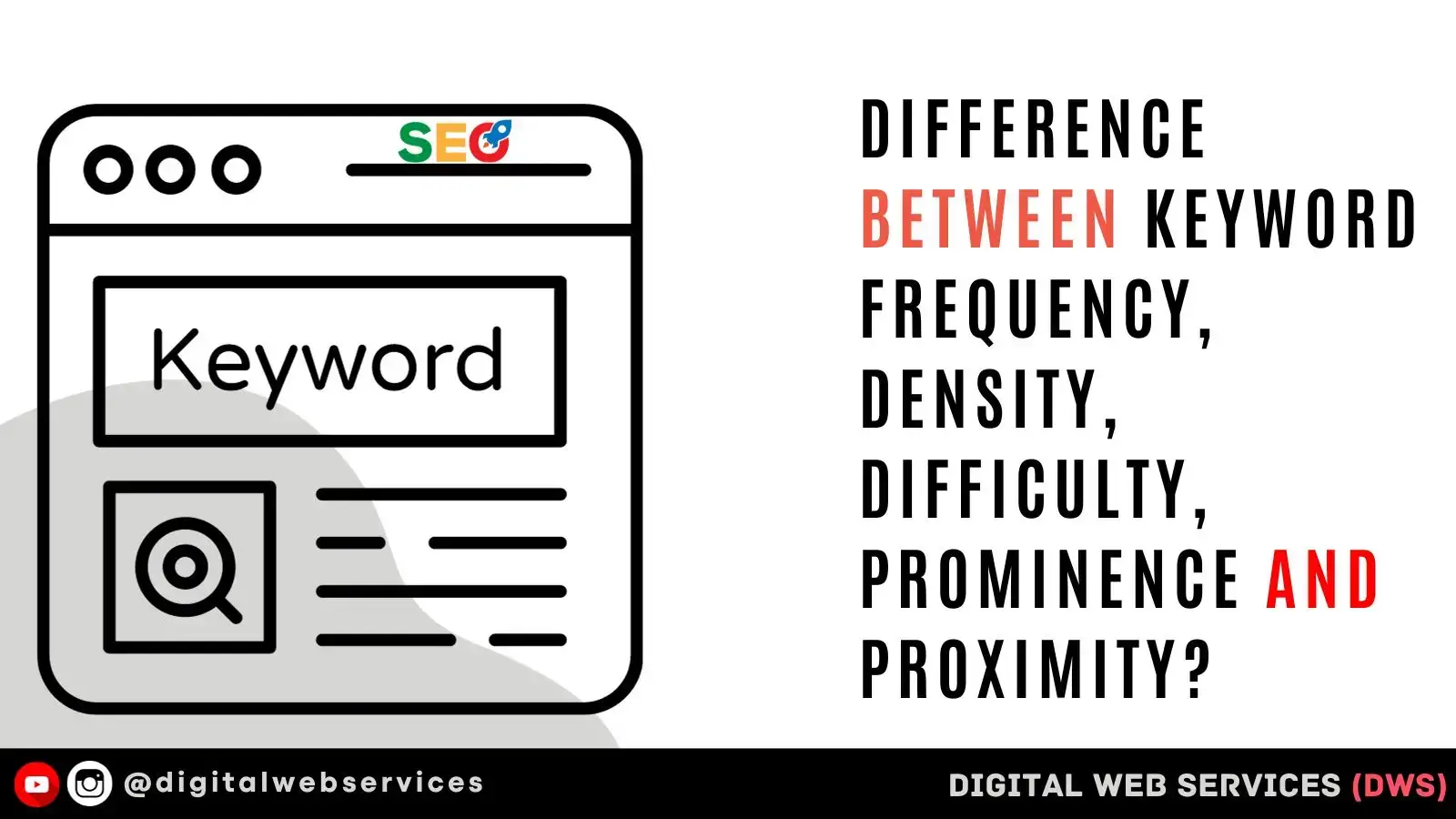
Keyword Frequency, Keyword Density, Keyword Difficulty, keyword Prominence, and Keyword Proximity are used for web content optimization as a parameter for measuring the keyword’s relative value in the context. For any web page optimization, keywords play an important role in helping search engines understand the content and relevance of a web page. To enhance any web page traffic and targeted keyword ranking on search engines we should do keyword research and analysis by following all the guidelines. However, it’s essential to note to avoid keyword stuffing in your web page content, as it is the black-hat SEO technique. Search engines, such as Google, require “proof” in the form of keywords to determine the true relevance of your content to a given query.
What Difference Between Keyword Frequency, Density, Difficulty, Prominence & Proximity?
Keyword Frequency, Density, Difficulty, Prominence, and Proximity are the most important for web page search engine optimization, here we know the difference between them according to their definition:
Keyword Frequency:
Keyword frequency (How often the keyword is used on a web page) refers to the number of times a specific keyword or keyphrase appears within the content body.
Keyword Density:
Keyword density is the ratio of the number of times a keyword appears within the content to the total number of words in that content. It is usually shown as a percentage. Keyword density is the best way to measure how a keyword is featured with respect to the overall content. It’s important to avoid excessive keyword stuffing on your particular web page.
Keyword Difficulty:
Keyword difficulty is a metric that evaluates how difficult it is to rank a specific keyword in search engine results. A keyword with high difficulty may be highly difficult to rank, while a keyword with low difficulty may be easier to rank on search engines.
Keyword Prominence:
Keyword prominence involves on placement and visual prominence of a keyword within content. It includes some factors like using keywords in titles, headings, and the first and last paragraphs of an article. Prominence helps search engines to understand the importance of the targeted keyword within the content.
Keyword Proximity:
Keyword proximity concerns how closely related or how far individual keywords are within a segment of content. Search engines view the order and proximity of words to understand the context and relevance of a keyword phrase. Proper keyword proximity helps in improving the content’s quality and relevance for the targeted keyword.
Final Thought
Keyword Frequency vs. Keyword Density vs. Keyword Difficulty vs. Keyword Prominence vs. Keyword Proximity, as you have seen the above definition, we think you have understood all of these. It’s most important to make sure to balance your keywords when optimizing your content for SEO. For a 1,000-word article, you may use your primary keyword around 10-20 times (approx 1-2%), It is the best practice to optimize your web page content over SEO keywords for the search engines like Google and Microsoft Bing. There are many free SEO keyword research tools like KWfinder, Keyword Planner, SEMrush keyword magic tool, and many others that you can use to check your website SEO keywords.
Digital Web Services (DWS) is a leading IT company specializing in Software Development, Web Application Development, Website Designing, and Digital Marketing. Here are providing all kinds of services and solutions for the digital transformation of any business and website.











